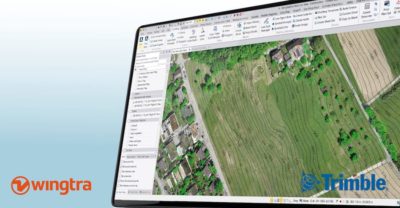 Since the latest Wingtra software release, it is now easy to directly import WingtraOne drone data into Trimble Business Center (TBC), a comprehensive software suite based on a long legacy of service and experience in the survey and construction industries. TBC integrates a range of in-demand software and enables users to work across these platforms with field data, all in one place. This update expands the potential for applying WingtraOne’s broad-coverage, high-accuracy drone data to professional survey and construction projects across industries.
Since the latest Wingtra software release, it is now easy to directly import WingtraOne drone data into Trimble Business Center (TBC), a comprehensive software suite based on a long legacy of service and experience in the survey and construction industries. TBC integrates a range of in-demand software and enables users to work across these platforms with field data, all in one place. This update expands the potential for applying WingtraOne’s broad-coverage, high-accuracy drone data to professional survey and construction projects across industries.
“It’s a solid step forward to enable our data to work smoothly with Trimble Business Center,” said Francois Gervaix, Wingtra’s geospatial expert. “TBC is a reference software in the industry, because it’s a successful convergence of all kinds of tools and devices. It’s compatible with many survey methods and has a long history of use.”
Both TBC and WingtraOne customers benefit from this update, as it enables a simple drag and drop of data into the software suite, at which point all of its tools and features are accessible.
“Trimble understands that one of the strengths of its platform is how exhaustive it is in terms of covering all of the major software and data-capture players,” Gervaix said. “For this reason, we were asked to enable our software to export data in a compatible format.”
The Wingtra software release that introduced JobXML (TBC file format) file compatibility also brought various other product updates. Namely, high-altitude flight capabilities, longer flight times and more intuitive battery level readings in-flight.
WingtraOne is becoming the go-to drone for survey and mapping professionals seeking both high-accuracy data and broad coverage for large-scale, professional projects. The vertical take-off and landing (VTOL) feature allows it to take off and land smoothly in confined and rough terrain. Since it doesn’t face hard impacts on landing, it can carry higher-end cameras. It’s RX1R II payload and multi-frequency PPK module, specifically, allow for drone survey absolute accuracy down to 1 cm (0.4 in) while maintaining a standard of broad coverage that fixed-wings are known for.
